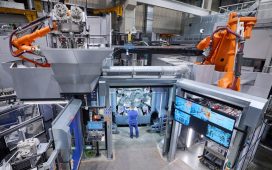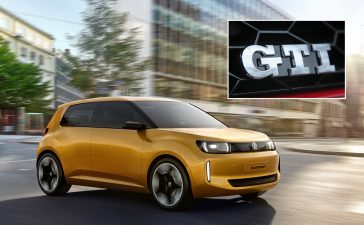On a recent Friday evening, a driverless car pulled up alongside an outdoor dining shed in the Mission district of San Francisco, put on its hazard lights, and waited. As traffic began to pile up behind the vehicle, a man smoking a cigarette outside a nearby bar rolled his eyes.
“I don’t drive a car,” he grumbled, “so I don’t really care about these things.”
Other residents of this hilly city by the bay are not so ambivalent about the coming onslaught of autonomous cars. The California Public Utilities Commission (CPUC) is poised to vote this Thursday on whether to allow Cruise and Waymo, the two main companies with autonomous vehicles in San Francisco, to expand their paid ridehailing services to operate 24/7.
Other residents of this hilly city by the bay are not so ambivalent about the coming onslaught of autonomous cars
Currently, the companies only offer limited service. A vote in favor of the companies would essentially give robotaxis full access to the peninsula and its residents. They would be able to operate similarly to Uber or Lyft — travel anywhere in the city, at any time of day, and charge money for the rides.
The vote also represents “the most significant regulatory moment for autonomous vehicles in the US over the last/next 3 years,” said Reilly Brennan, general partner at venture capital firm Trucks.
Photo by Justin Sullivan / Getty Images
According to Brennan, a robotaxi’s service area is also its total addressable market, a term in corporate finance that usually describes how much possible revenue a company can make.
“If CPUC says it cannot operate 24 hours per day, you effectively have a reduced total addressable market,” he said in an email. “That’s why this upcoming vote is so critical: we’ll find out if the most significant US state (by revenue) is giving a green, yellow or red light to AV robotaxi’s future.”
“That’s why this upcoming vote is so critical”
City officials are praying for a red light, or at least a yellow one. For months, they have been pleading with the state to delay the vote, citing a spate of incidents in which autonomous vehicles have stopped traffic, blocked buses, or obstructed emergency vehicles. The city’s transit agency and fire and police department have all logged complaints with the CPUC, calling for the commission to reconsider the plan for 24/7 service.
“They’re not ready for prime time,” San Francisco Fire Chief Jeanine Nicholson told the Los Angeles Times recently. The department has logged 66 incidents since May 2022 in which robotaxis have interfered with firetrucks, according to The Washington Post.
Many incidents have gone viral: robotaxis blocking intersections, forcing bus passengers to get out and walk, driving over fire hoses. In May, body camera footage captured a cop wielding a road flare at a Cruise vehicle, barking at it to “stay” as if it were an unruly puppy. After a mass shooting in June that wounded nine people, a robotaxi blocked a lane of traffic in the Mission district, slowing down emergency vehicles.
The state’s Department of Motor Vehicles has logged nearly 75 collisions involving autonomous vehicles this year, including one last May in which a Waymo vehicle ran over and killed a small dog. The vehicle was operating with a safety driver in the front seat.
A Waymo vehicle ran over and killed a small dog
The companies have defended themselves, noting that they are in communication with city officials about ways to improve to avoid future incidents. They also note that no one has been seriously hurt or killed by an autonomous vehicle in San Francisco, while many people are killed every year by human-driven ones. Pedestrian deaths in the city, much like in the rest of the country, have ticked up each year. There were 20 pedestrians killed by drivers in 2017 and 39 in 2022, according to city data.
But some residents aren’t taking the slow advance of robotaxi coverage lying down. An activist group calling itself Safe Street Rebel put out a call on social media for people to place orange traffic cones on the hoods of any robotaxi seen wandering the streets of San Francisco, which would effectively disable it.
“Cruise & Waymo promise they’ll reduce traffic & collisions, but we know that’s not true,” the pseudonymous account wrote on Twitter last week. “They block busses & emergency vehicles, create more traffic, and are a surveillance nightmare.”
Autonomous vehicles usually have more cameras on them than typical passenger vehicles. Police could request footage from those cameras to investigate crimes or to violate residents’ privacy, advocates say. Waymo has received some requests for camera footage from law enforcement agencies but says it generally requires a warrant or court order.
Regardless, the spread of robotaxis is testing San Francisco’s desire to continue to play guinea pig to Silicon Valley’s futuristic experiments. “I do believe people are both fed up with heavily distracted human-piloted vehicles / driver distractions *and* also that there has been a public backlash against AV fleets in some cities,” Brennan said. “There is a public chorus for a better, safer experience in cities.”












